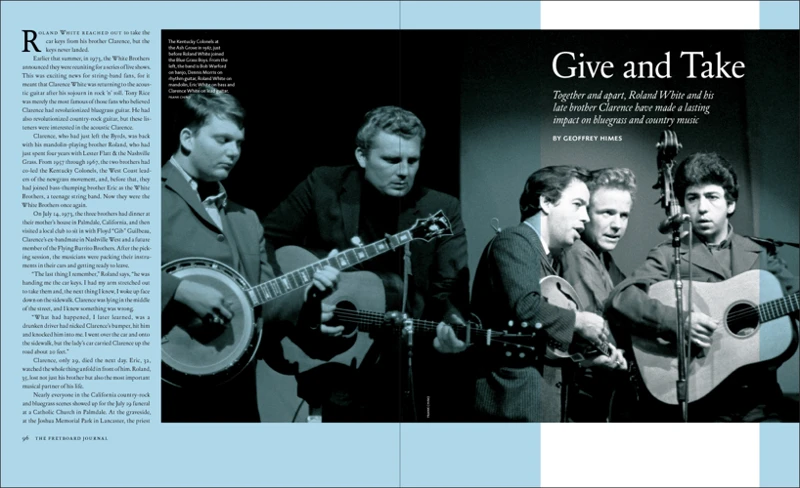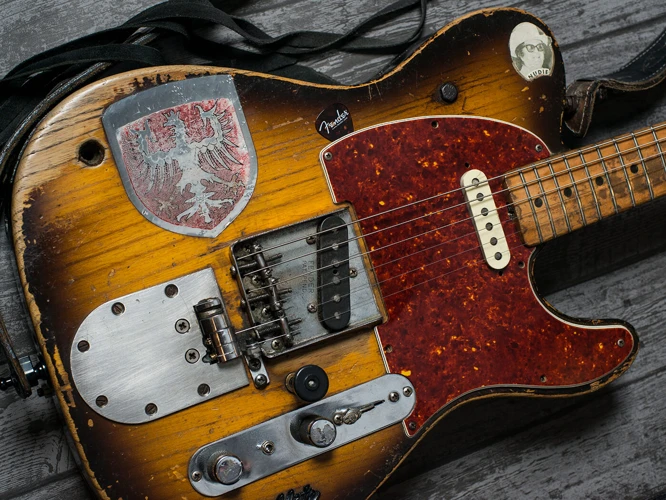Clarence White, a legendary figure in the world of bluegrass music, is often credited with revolutionizing the genre through his innovative use of the electric guitar. His contributions to bluegrass music, particularly through his groundbreaking work with the electric guitar, have had a lasting impact on the genre and continue to influence musicians to this day. In this blog post, we will explore the importance of Clarence White’s electric guitar innovations in bluegrass music and how they have shaped the sound and evolution of the genre.
Clarence White: A Pioneer in Bluegrass Music
Clarence White, born Clarence LeBlanc in 1944, was an American musician who is best known for his work as a guitarist and singer in the bluegrass and country rock genres. He rose to prominence in the 1960s as a member of the influential bluegrass band The Kentucky Colonels, where he showcased his exceptional guitar skills and innovative approach to the instrument.
White’s playing style was characterized by his virtuosic flatpicking technique, which involved using a flat pick to play rapid and intricate melodies on the guitar. This technique, combined with his unique sense of phrasing and tone, set White apart from other guitarists of his time and established him as a true pioneer in the world of bluegrass music.
Electric Guitar Innovations
One of Clarence White’s most significant contributions to bluegrass music was his pioneering use of the electric guitar in a genre that was traditionally dominated by acoustic instruments. While the electric guitar had been used in other genres such as rock and roll, it was relatively unheard of in bluegrass music prior to White’s experimentation with the instrument.
White’s decision to incorporate the electric guitar into his bluegrass playing marked a significant departure from tradition and opened up new possibilities for the genre. By amplifying the sound of the guitar, White was able to achieve a greater level of volume and projection, allowing his playing to cut through the mix in a way that was previously unheard of in bluegrass music.
White’s use of the electric guitar also allowed him to explore new sonic textures and tonal possibilities that were not achievable with an acoustic instrument alone. He experimented with different effects pedals, amplifiers, and playing techniques to create a signature sound that was both innovative and groundbreaking.
The B-Bender
One of Clarence White’s most famous innovations on the electric guitar was the development of the B-Bender, a mechanical device that allowed him to bend the B string on his guitar up a whole step with the flick of a lever. This innovative invention gave White the ability to mimic the sound of a pedal steel guitar, adding a new dimension to his playing and expanding the tonal palette of bluegrass music.
The B-Bender quickly became a signature element of White’s playing style and set him apart as a true innovator in the world of bluegrass guitar. His use of the B-Bender on classic recordings such as “Soldier’s Joy” and “Nine Pound Hammer” showcased the versatility and expressiveness of the device, solidifying White’s reputation as a pioneer in the field of electric guitar innovation.
Collaborations and Influence
Throughout his career, Clarence White collaborated with a wide range of musicians across different genres, further expanding the reach and impact of his electric guitar innovations. He worked with artists such as The Byrds, Joni Mitchell, and The Everly Brothers, bringing his unique playing style and inventive approach to the electric guitar to a broader audience.
White’s influence extended far beyond the bluegrass and country rock genres, inspiring countless musicians to explore new possibilities on the electric guitar and push the boundaries of traditional music. His innovative use of the instrument paved the way for future generations of guitarists to experiment with tone, technique, and technology, leaving an indelible mark on the evolution of music as a whole.
Legacy and Continued Impact
Clarence White’s contributions to bluegrass music and the world of the electric guitar continue to resonate with musicians and fans alike, decades after his untimely death in 1973. His innovative spirit, virtuosic playing, and groundbreaking inventions have solidified his legacy as one of the most important figures in the history of bluegrass music and electric guitar innovation.
As bluegrass music evolves and embraces new technologies and influences, Clarence White’s pioneering work with the electric guitar serves as a reminder of the power of innovation and creativity in shaping the future of music. His legacy lives on in the music of countless artists who have been inspired by his playing and continue to push the boundaries of what is possible on the guitar.
Looking to explore more about electric guitar innovations in country music? Check out our articles on Jerry Reed’s contributions, top country guitarists, Les Paul’s influence, and classic Telecaster tones in country music. Want to learn about sustainability in wood for country music guitars? Check out our article on farm to guitar sustainability for more insights!
Conclusion
In conclusion, Clarence White’s electric guitar innovations have played a crucial role in shaping the sound and direction of bluegrass music, setting new standards for technique, tone, and expression in the genre. His pioneering use of the electric guitar and inventive inventions such as the B-Bender have left an indelible mark on the world of music and continue to inspire musicians to this day. Clarence White’s legacy as a true innovator and visionary in the world of bluegrass music will forever be celebrated and remembered as a testament to the power of creativity and innovation in shaping the future of music.


